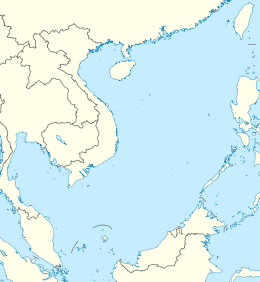
The Perhentian Islands are islands in Besut District, Terengganu, Malaysia.
The Orderly Departure Program(ODP) was a program to permit immigration of Vietnamese to the United States and to other countries. It was created in 1979 under the auspices of the United Nations High Commissioner for Refugees (UNHCR). The objective of the ODP was to provide a mechanism for Vietnamese to leave their homeland safely and in an orderly manner to be resettled abroad. Prior to the ODP, tens of thousands of "boat people" were fleeing Vietnam monthly by boat and turning up on the shores of neighboring countries. Under the ODP, from 1980 until 1997, 623,509 Vietnamese were resettled abroad of whom 458,367 went to the United States.
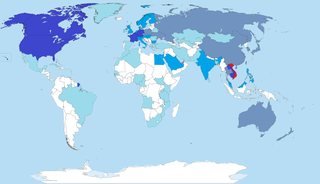
Overseas Vietnamese are Vietnamese people who live outside Vietnam. There are approximately 5 million overseas Vietnamese, the largest community of whom live in the United States.
Galang is an island of 80 km2 located 25 mi (40 km) southeast of Batam, belonging to a group of three islands called Barelang. Part of the Riau Archipelago, Indonesia, Galang is located just south of Batam and Rempang which themselves are just south of Singapore and Johor. Administratively, all three islands form part of the city of Batam; the nearest other city to Galang is Tanjungpinang on Bintan island, about a 30-minute boat ride away. The island is connected by the Barelang Bridge to Rempang and Batam.
The Comprehensive Plan of Action (CPA) is a program adopted in June 1989 at a conference in Geneva held by The Steering Committee of the International Conference on Indo-Chinese Refugees. It was designed to deter and to stop the continuing influx of Indochinese boat people and to cope with an increasing reluctance by third countries to maintain resettlement opportunities for every Vietnamese or Laotian exile, with the threat of countries of first asylum in Southeast Asia to push back asylum seekers.

Galang Refugee Camp accommodated Indochinese refugees from 1979 to 1996 on Galang Island in the Riau Islands of Indonesia. It is estimated that around 250,000 refugees passed through Galang during this period.
Many of the Vietnamese people in Hong Kong immigrated as a result of the Vietnam War and persecution since the mid-1970s.
Tenggol Island is an island around 24 kilometres (15 mi) off the coast of Terengganu, Malaysia. It is the last island in a string of islands that include Pulau Perhentian and Pulau Redang. It is connected by ferry to Kuala Dungun on the mainland.
The Skyluck was a 3,500-ton Panamanian-registered freighter that carried 3,200 Chinese and Vietnamese boat people fleeing Vietnam four years after the fall of Saigon. The ship left Vietnam from the Mekong delta city of Bến Tre, on January 24, 1979, and after a sea voyage entered Hong Kong harbour under the cover of darkness on 8 February 1979. It was discovered and ordered to set anchor by the Hong Kong Police. Thus, began a 4+1⁄2-month-long stalemate as the refugees waited on the ship for the Hong Kong government to decide their fate. The event turned into an international humanitarian incident, which was a symbol of a much larger problem: the estimated one million refugees who risked everything to flee Laos, Cambodia, and Vietnam in the aftermath of the Vietnam War.
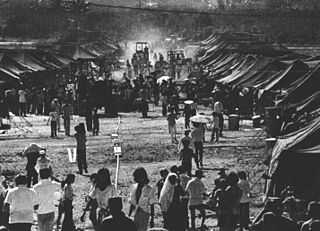
Operation New Life was the care and processing on Guam of Vietnamese refugees evacuated before and after the Fall of Saigon, the closing day of the Vietnam War. More than 111,000 of the evacuated 130,000 Vietnamese refugees were transported to Guam, where they were housed in tent cities for a few weeks while being processed for resettlement. The great majority of the refugees were resettled in the United States. A few thousand were resettled in other countries or chose to return to Vietnam on the vessel Thuong Tin.
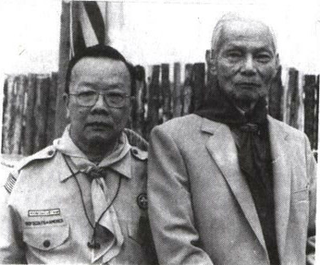
Trần Văn Khắc is widely recognised as the founder of the Vietnamese Scouting movement in Vietnam in 1930 in Hanoi. He was a Secretary at Agriculture Department and an athlete. The Scout movement that he created was called Dong Tu Quan, and it had a focus on athletics as well as the standard Scouting activities. In 1932, Trần Văn Khắc went to live in Saigon, where he, Lương Thái, Huỳnh Văn Diệp, and Trần Con established the Cochinchinese Scout Association. Meanwhile, Hoàng Đạo Thúy led the Northern branch. In 1978 he left South Vietnam as Boat people to Pulau Bidong ( Malaysia) until 1979 and was admitted to Canada as Refugee. He died in Ottawa in 1994. https://web.archive.org/web/20070522042514/http://www.vietnamhumanrights.net/Forum/LLT_52404.htm]
Boat People SOS (BPSOS) is a 501(c)(3) nonprofit organization devoted to Vietnamese-American civic and political activism. It is headquartered in Falls Church, Virginia. BPSOS' mission is to "empower, organize, and equip Vietnamese individuals and communities in their pursuit of liberty and dignity.” BPSOS claims that one in 10 Vietnamese Americans has received assistance from BPSOS while still in Vietnam, on the high seas, in a refugee camp, or after arriving in the United States. Through their 17 office locations in the U.S. and two office locations in Southeast Asia, they provide a web of services to support individuals, families, and communities.

Malaysia–Vietnam relations date to at least the 15th century. Malaysia forged diplomatic ties with the modern-day Vietnamese state on 30 March 1973; as of 2015, these ties are still in existence. During the late 1970s and 1980s, the countries' relationship became strained as a result of the Cambodian–Vietnamese War and the influx of Vietnamese boat people into Malaysia. The subsequent resolution of these issues saw the cultivation of strong trade and economic ties, and bilateral trade between the countries grew strongly, with an expansion into areas including information technology, education and defence. Both countries are members of APEC and ASEAN.
Vietnamese people in France consist of people of full or partial Vietnamese ancestry who were born in or immigrated to France. Their population was about 400,000 as of 2017, making them one of the largest Asian communities in the country.
Communism in Vietnam is linked to the Politics of Vietnam and the push for independence. Marxism was introduced in Vietnam with the emergence of three communist parties: the Indochinese Communist Party, the Annamese Communist Party, and the Indochinese Communist Union, later joined by a Trotskyist movement led by Tạ Thu Thâu. In 1930, the Communist International (Comintern) sent Nguyễn Ái Quốc to Hong Kong to coordinate the unification of the parties into the Vietnamese Communist Party, with Trần Phú as its first Secretary General.

Vietnamese boat people were refugees who fled Vietnam by boat and ship following the end of the Vietnam War in 1975. This migration and humanitarian crisis was at its highest in the late 70s and early 80s, but continued well into the early 1990s. The term is also often used generically to refer to the Vietnamese people who left their country in a mass exodus between 1975 and 1995. This article uses the term "boat people" to apply only to those who fled Vietnam by sea.
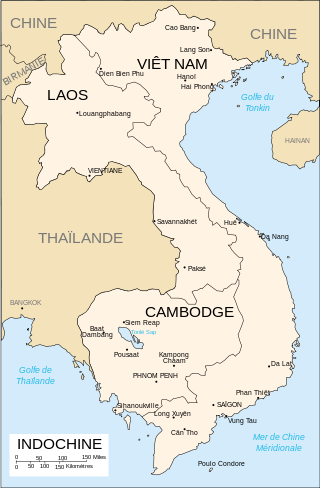
The Indochina refugee crisis was the large outflow of people from the former French colonies of Indochina, comprising the countries of Vietnam, Cambodia, and Laos, after communist governments were established in 1975. Over the next 25 years and out of a total Indochinese population in 1975 of 56 million, more than 3 million people would undertake the dangerous journey to become refugees in other countries of Southeast Asia, Hong Kong, or China. According to the United Nations High Commissioner for Refugees, 250,000 Vietnamese refugees had perished at sea by July 1986. More than 2.5 million Indochinese were resettled, mostly in North America, Australia, and Europe. More than 525,000 were repatriated, either voluntarily or involuntarily, mainly from Cambodia.
The Vietnamese Malaysians consists of people of full or partial Vietnamese descent who were born in or immigrated to Malaysia. The estimated number of people who speak Vietnamese in Malaysia is 70,000 in the country.
The Cambodian humanitarian crisis from 1969 to 1993 consisted of a series of related events which resulted in the death, displacement, or resettlement abroad of millions of Cambodians.
Ban Vinai Refugee Camp, officially the Ban Vinai Holding Center, was a refugee camp in Thailand from 1975 until 1992. Ban Vinai primarily housed highland people, especially Hmong who fled the Hmong genocide in Laos. Ban Vinai had a maximum population of about 45,000 Hmong and other highland people. Many of the highland Lao were resettled in the United States and other countries. Many others lived in the camp for years which came to resemble a crowded and large Hmong village. The Royal Thai Government closed the camp in 1992, forced some of the inhabitants to return to Laos and removed the rest of them to other refugee camps.



